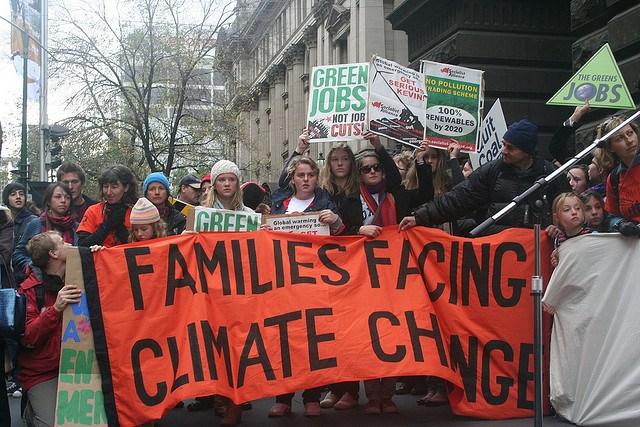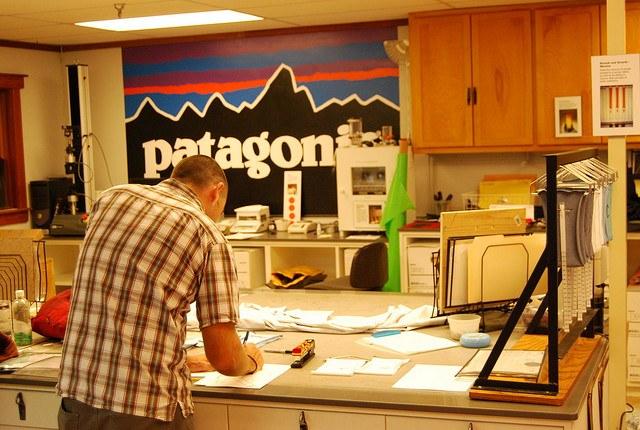Chemical Flame Retardant Industry Suffers More Blows


Flame retardant opponents had a big reason to celebrate this weekend. Sen. Chuck Schumer (D-N.Y.) announced on Sunday that he would get behind the push to ban chemical flame retardants from furniture and children’s products.
Schumer has proposed a ban on 10 specific flame retardants that are used in children’s clothing, bedding and other furniture products. The flame retardant products associated with TDCPP and TCEP in particular have been found to be toxic to humans through long-term exposure.
Plus, Schumer says, there is now question about their efficacy in stopping fires.
“It’s a nightmare scenario that is all too real: Children are being exposed to highly toxic flame retardants -- that can cause cancer and developmental delays -- just by lying on a changing table and in their cribs, or even by sitting on the family couch. To boot, these carcinogenic chemicals found in foam are not effective in reducing fire risks,” the senator said in press conference on Sunday.
Schumer was joined by representatives of the Uniformed Fire Officers Association, the Uniformed Firefighters Association, the Center for Environmental Health, Safer Chemicals Healthy Families and Clean and Healthy NY, as well as medical personnel from Mt. Sinai’s Children's Environmental Health Center.
Increasing attention is being drawn as well to the exposure that first-line responders and other fire and law personnel receive when they are responding to a fire that may involve furniture sprayed with chemical flame retardants. According to Dr. Susan Shaw, a professor at the State University of New York’s Environmental Health Sciences, School of Public Health, “Cancer is the leading cause of line-of-duty deaths among firefighters today.” Shaw is also the founder and director of the Marine Environmental Research Institute and has conducted research on first-line responders exposed to chemicals in the line of duty.
And environmental advocates have even more reasons to celebrate: Last week four national health care systems announced that they have decided to stop purchasing furniture treated with flame retardants. University Hospitals, Beaumont Health System, Hackensack University Medical Center and Advocate Health Care stated in a joint press release on Sept. 10 that they would begin transitioning away from furniture that contains chemicals used for this purpose. The four health care systems all provide services in the eastern U.S., and are taking the initiative independently.
The announcements are likely to have a decisive effect on the flame retardant industry. The four health care providers have a consumer base of more than 7,000 and say they spend on average more than $40 million on furniture purchases per year combined – all of which they say they will now spend on furniture that doesn’t use chemical flame retardants.
The announcements and recent efforts by furniture companies to drop flame retardants in California dovetail with new studies that suggest the chemicals are retained in the body and the environment much longer than originally suspected. A new study put out by Duke University and Environmental Working Group on mothers and their children who were exposed to TDCPP found that the chemical could actually be measured in the human body, and that children exposed to TDCPP showed significantly higher retention of the carcinogen than adults. One child was found to have 23 times the level of the chemical in his body than his mother. Average readings of exposure showed a 5-to-1 increase in children compared to their parent. TDCPP has been linked to hormonal disruption and other metabolic problems.
Sen. Schumer’s legislation would ban the top 10 flame retardants that have been linked to cancer and health problems. They are:
- TDCPP
- TCEP
- TBBPA
- Decabromodiphenyl ether
- Antimony trioxide
- HBCD
- TBPH
- TBB
- Chlorinated paraffins
- TCPP
Schumer’s bill will, of course, have to be ratified by both the Senate and the House. With the increasing effort by companies and nonprofits to bow out of using chemical flame retardants, however, commercial momentum may have just as much say as political oversight in changing U.S. flame retardant testing and standards.
Image of child in crib: Nerissa's Ring
Image of firefighter: DVIDSHUB
Expanding the NGO-to-Business Partnership Model in Canada


By Elizabeth Dove
Can value for both business and developing country communities be realized with integrity?
Partnerships between international non-governmental organizations (INGOs) and businesses are fairly new and somewhat uncomfortable territory in Canada. Such collaborations are usually philanthropic and/or volunteer contributions by business, in exchange for bragging rights on good deeds done. Even on this modest partnership plane, there is a great deal of heated discourse from within the Canadian development sector around the appropriateness of INGOs working with business.
There is, however, a small but growing number of Canadian INGOs positioning themselves as having a service to offer business that will create value for both the core business of a company and meet the mandate of the NGO. Examples include World Vision Canada’s work with extractive companies to ensure project alignment with local government and community development and Socodevi's work to improve the capacity of Van Houtte coffee producing communities in Honduras.
Another such entrepreneurial initiative is the business brokerage service of Uniterra. Uniterra is a co-venture of the INGOs World University Service of Canada (WUSC) and Center for International Studies and Cooperation (CECI). As it has developed into Canada’s largest overseas volunteer-sending program over the past 10 years, Uniterra has established strong business relationships and networks in the countries it works with throughout South and Central America, Africa and Asia. Opportunities to facilitate partnerships with overseas businesses to benefit local communities evolved naturally.
Playing matchmaker between business and opportunities in the developing world
As an audience assembled on June 27 at the Ryerson CSR Institute in Toronto to give input on the Uniterra Partnership Brokers value proposition were told, the rich hydrating properties in the French cosmetic brand L'Occitane are the result of a partnership CECI and Uniterra brokered 16 years ago. Sylvain Matte, senior advisor for Uniterra Strategic Partnerships, told those gathered about how two generations of women have now benefited from the skills, revenue and empowerment created by the partnership between L'Occitane and the shea nut women’s co-op in Burkina Faso.
Uniterra went on to illustrate other partnerships that have benefited local businesses and local communities that they have brokered, such as the partnerships they are currently facilitating between a juice company and Malian mango producers and one between a mining equipment company and a their new local representatives in Senegal who are getting skills training through exchanges of staff.
Uniterra has several strengths it plays to in the role of matchmaker: staff on the ground, many of whom are local and so fluent not just in the language but the culture; a long history and talent for facilitating strategic partnerships between organizations, listening for points of similarity and divergence; experience in assessing capacities of organizations to develop new skills; expertise in adult education training techniques to skill up individuals and organizations where there are gaps.
Barriers for INGOs in working with business
As Dr. Kerrighan Webb, event host and director of the Ryerson’s CSR Institute, noted: INGOs are sitting on business opportunities they haven’t realized. “All of these contacts, on the ground knowledge and connections can be used for everyone’s benefit,” Webb said.
So what’s holding INGOs back? Over the 50-plus years of INGOs working to improve the lives of those in the developing world, business hasn’t been a traditional partner – INGOs are usually working in the space between community organizations and varied levels of government because all have stated goals around improving the health and livelihoods of the local people. The key goal for business is revenue growth which has historically come at the expense of the livelihood (abysmal wages), rights (land acquisition) and environmental health of the poorest, putting business then at odds with the goals of INGOs. Business isn’t top of mind as a development partner for many INGOs for this reason alone. Of course alongside that revenue goal, more and more companies are now actively seeking ways to use their core competencies to achieve corporate social responsibility (CSR) goals around improving lives and the environment. But their language, metrics and value set creates a kind of sectorial cultural barrier that INGOs often are ill equipped to cross, if they were inclined.
Indeed, in polishing their offering, it became apparent that Uniterra would have fine-tune their already impressive business acumen and work on their positioning. Several audience members offered that, to be truly resonant, Uniterra must hone in on a few sectors and unpack the needs of each, using sector-specific language. Tea and mining, it was pointed out, have different gaps and metrics. The Uniterra staff also showed timidity characteristic of the NGO sector in answering a question about their value-add over competitors. The staff acknowledged this was a skillset they need to build.
But to Webb’s point, Uniterra has an advantage a number of INGOs do not: They see the opportunity. They see that their core competencies and assets have value to business – both in the developed and developing world – and that they can better meet their mandate to create economic opportunities for women and youth in the developing countries by harnessing their strengths and packaging them for Canadian business.
Shaking up the INGO model to meet mission, fiscal realities
This realization didn’t come overnight. It has after all been 16 years since they played matchmaker between L'Occitane and the shea nut co-op. But time has made evident the sustainable results of the partnerships Uniterra has brokered: thousands of jobs created; leadership roles and empowerment for women; access to technology, credit and business development services for entrepreneurs, farmers and family businesses; and vocational and entrepreneurship training for youth. Uniterra has found that, with integrity, they can create partnerships where both big business and small communities thrive. All of this is achieved along with business partners meeting their goals around revenue generation, new supply sources, expansion and improved community and employee relations.
Matte concedes that the push to market test the expansion of the “Uniterra Partnership Brokers” model, at events throughout the country like the one at Ryerson, has come from both the convergence of community impact analysis and fiscal pressures:
“We strongly believe that a better synergy between aid, trade and private investment can contribute to more sustainable development. The Canadian government has made it clear that long gone are the days when INGOs can expect renewed funding based on the historical levels. We are being encouraged to innovate our delivery model and diversify our revenue sources. At the same time the Department of Foreign Affairs, Trade and Development (DFATD), like many other major donors, is encouraging business to consider ways they can become more involved in improving the conditions in the developing world. The timing is right for Uniterra to take our model of working with business to a new level.”
As demonstrated by private sector representatives at Ryerson, there is an appetite for this kind of partnership that delivers both solutions to business and community development. It will be interesting to see how other Canadian INGOs position their assets to meet their mission in current donor funding and CSR environment.
Image credit: Flickr/whiteafrican
Elizabeth Dove is a specialist in strategically engaging the public, companies and government on sustainability and social change. She has worked as senior staff and consultant for initiatives that support the arts, child welfare, public health and particularly international development. Using a results-oriented approach focused on tangible measurable benefits, Elizabeth helps bridge the cultural differences between sectors to create collaborations that meet shared goals. She is an Associate at Open Spaces Learning, a Canadian change management firm helping companies realize business and social impact. She is also a Strategist at Dove Consulting which consults with Uniterra on its business platform. Twitter: @EDove5, @openspaceslearn.
Fear-Based Marketing Has No Place in the Mainstream Climate Change Debate


By Ian Edwards
The underwhelming launch in August of Milton Glaser’s new graphic campaign -- “It’s not warming. It’s dying” -- shows in dreary shades of green the many ongoing branding and marketing challenges of the climate change movement.
The prolific graphic design genius behind the happy and ubiquitous “I ♥ NY” slogan (that single-handedly rebranded a struggling city in 1977) can’t even get it right.
His design of a green disk shrouded in a deathly black fog is dull, and the tagline is just plain wrong. The planet is warming according to the many scientific minds at the United Nations’ International Panel on Climate Change, as just one source blaming humans for making climate change worse. Additionally, the people living here are indeed threatened, but this big orbiting rock will outlive us all.
With an issue as polarizing as climate change, accuracy is important.
The 'sustainability' conversation – of which the climate change discourse is a critical subset -- needs recalibration, traction and a spark that will ignite it in the mainstream beyond the lukewarm response to the crisis to date. How much more evidence do we need that the language of fear, which Glaser uses, fails to engage and inspire action?
The term 'sustainability' was adopted to make “save the world” earnestness palatable for stodgy boardroom meetings -- and to let businesses seem like they are part of the environmental solution. At its core, 'sustainability' is about surviving, rather than thriving. No wonder it doesn’t change behavior.
It's often not even genuine: As the Economist recently made vivid, so-called 'sustainability' programs in most business are misnamed when they are simply efficiency programs veiled in do-gooder activities for PR gains.
'Climate change' -- or the more provocative term 'global warming' -- is also abstract and, as is the case in the U.S., politicized beyond meaning. Despite compelling science and super storms, it is mired in the language of faith, or humanity’s birthright entitlements, or government overstep.
If there is any success in marketing climate change awareness, it’s not yet in the mainstream marketing channels that speak to everyone, but in the domains of non-governmental organizations that preach primarily to the converted. Groups like World Wildlife Fund and 350.org have a head start in using clever, stakeholder-engaging marketing to link the way we live with the effects of climate change. The Guardian ran a representative list in 2013.
As a progressive consumer, I can send a few dollars to save a whale or spotted owl or starving child in Africa, but saving the climate needs a whole lot more engagement and sacrifice. Which may explain why Glaser’s latest effort to woo the mainstream with fear falls short.
Twenty years ago, social marketing researcher Kim Witte established a framework that tracked campaigns -- like health ads for anti-smoking, HIV/AIDs prevention and teen pregnancy awareness – that used shame, fear and blame to scare people into better behavior.
“The minute that perceived threat exceeds perceived efficacy [the ability to effectively respond], then people begin to control their fear instead of the danger and they reject the message,” she says in The Use of Fear Appeals, an undated presentation available online.
Someone might agree with Glaser and might even be scared by his campaign -- but they also feel powerless and, as a result, ignore it.
Except, it’s not like we haven’t tackled abstract environmental bogeymen before.
In the 1970s we dealt with the scary issue of ozone depletion caused by chlorofluorocarbons (CFCs) in common products like aerosol cans. I remember the advocacy messaging in my comic books. By the 1990s, we marshaled a U.S. response to the dangers of acid rain through emission caps and the Clean Air Act.
Why not climate change?
As a top-line summary: The deniers’ work to sow doubt is effective, and the fix seems way too painful. We need better terms of reference. We need to put the focus on the parties who can actually get creative ideas in place and at scale.
As an alternative to 'sustainability,' the term 'resilience' is a great word – offering hope, the sense that we can rebound and that something can be done. Tom Steyer’s NextGen Climate is focusing the fight in the right arena – the ballot box, the stalled government process and candidates who believe in addressing climate change. The NYC People’s Climate March on Sept. 21 has the potential to vividly prove the widespread solidarity on this issue, swing momentum in the conversation and bring groups like 350.org into the mainstream. And, if the viral spread of the Tesla Motors brand is any indication, the public is hungry for exciting alternatives, innovations and evidence of humanity’s ability to practically address the environmental challenge.
All of which points to an opportunity to reframe the overall conversation – in which marketers can be pivotal and constructive. To borrow from Witte, we might ask ourselves what allows the mainstream to feel effective in changing our collective 'risky' behavior as it relates to climate change? Voting, marching and innovating are achievable, empowering, scalable and marketable.
Image credit: Flickr/takver
Based in New York City, Ian Edwards is a Sustainability Communications consultant and Sustainability MBA candidate at Bard. www.linkedin.com/in/ianedwards/
SOCAP14 Interview: Paula Goldman, Omidyar Network


This video is part of our ongoing coverage of SOCAP14. To see the rest please visit our SOCAP 14 page here.
What exactly is "impact investing"? Paula Goldman is Senior Director of Knowledge & Advocacy for Omidyar Network and, according to her, it's a type of investing that asks for both financial and societal return. In this brief conversation, Paula discusses both the history of impact investing and how governments can enact policies to encourage it.
NGOs recognise corporates offer more than money, says C&E report


Partnerships between companies and NGOs are now more likely to leverage non-financial resources and competencies to achieve mutually agreed goals, finds the latest research by C&E Advisory in its annual Corporate-NGO Partnerships Barometer report.
The report – the fifth in an annual series of practitioner-led studies drawing on a poll of 130 leading companies and NGOs – explores the drivers for, and barriers to, partnering, as well as future prospects for the corporate-NGO partnership agenda.
C&E Advisory found that both NGOs and corporates are gaining a greater understanding of the business potential of partnerships as organisations engage in multi-lateral agreements over longer timescales, leveraging each sector’s assets to maximise mutual benefit.
This year’s research has also seen a striking increase in the view that partnerships are changing business practices for the better. Around 59% of corporate respondents state that their NGO partnerships have helped them change business practices for the better (up from 46% in 2013) and 87% believe their NGO partners have helped their companies to better understand social and environmental issues.
Notably, 69% of business respondents believe that effectively harnessing their competencies and non-cash assets can make much more of an impact on their NGO partners than financial support alone.
And although a disparity remains between NGO and corporate perceptions of the value of non-financial support, this latest research reveals a narrowing gap as almost half of NGO respondents now acknowledge the impact that non-financial support, such as leveraging corporate competencies, canbring to the attainment of their mission (48%, up 12% on the 2013 figure).
When asked what factors were most likely to make corporate-NGO partnerships more important over the next three years, over 90% of all respondents state ‘increased recognition of the need to leverage each sector’s different assets in order to maximise mutual benefit’.
You can dowload the full report here.
Bee decline could signal threat to global nutrition


Declines in populations of pollinators such as bees and wasps may be a key threat to nutrition in some of the most poorly fed parts of the globe, according to new research.
A major study, published today in the Proceedings of the Royal Society B and co-authored by a University of Leeds academic, looked at the importance of pollinators to 115 of the most common food crops worldwide and the importance of those crops in delivering vital nutrients to vulnerable populations.
The research, the first to study the relationship between nutrition and pollination across the globe, found some regions where disruptions in pollination could have serious implications for human health.
Deficiencies in ‘micronutrients’—nutrients such as iron and vitamins that are required by the body in small quantities—are three times as prevalent where production of micronutrients is heavily dependent upon pollinators, such as Sub-Saharan Africa, India, and the Middle East.
In Southeast Asia and parts of Latin America, almost 50% of plant-derived vitamin A production relies on pollination.
Dr Becky Chaplin-Kramer, research associate at the Stanford Woods Institute for the Environment and the lead author of the study, said: "A disruption in pollination services certainly has a price-tag, estimates go as high as $390 billion annually, but the cost to our nutrition could be even greater."
“This means pollinator declines could hit hardest on the very people who can afford to lose the least in terms of nutrition,” she said.
The study was coordinated by the Natural Capital Project, a partnership between Stanford’s Woods Institute for the Environment, the University of Minnesota’s Institute on the Environment, The Nature Conservancy and the World Wildlife Fund.
Life After Sandy: How NYC is Improving Its Electric Grid


Editor's Note: This article is part of a short series on creating resilient cities, sponsored by Siemens. Please join us for a live Google Hangout with Siemens and Arup on October 1, where we’ll talk about this issue live! RSVP here.
The 9-foot storm surge from Superstorm Sandy, which came on top of a 5-foot high tide, inundated the low-lying areas of the city -- wiping out electrical service to substantial portions of the city, and ultimately causing some $50 billion worth of damage. Approximately 800,000 customers lost power in the city, along with millions more along the East Coast. The question posed in a recent toolkit was was: What actions can be taken to reduce the impact of a similar event?
With our climate in upheaval, many cities, organizations and businesses are talking about building resiliency into their operations, in order to allow them to better deal with extreme events such as heavy storms, droughts and floods. While these expenditures are often high, given today’s reality they are considered necessary -- in keeping with Ben Franklin’s adage that “an ounce of prevention is worth a pound of cure.”
While taking steps to improve the resiliency of, for example, a city’s electrical grid, won’t prevent the increasing number and intensity of storms from coming (only reducing our carbon emissions can do that), they can prevent the kind of system-wide damage that New York City and its residents suffered in the wake of Superstorm Sandy.
The grid’s 61 substations, 94,000 miles of underground cable and 34,000 miles of overhead cable are susceptible to damage and disruption caused by events ranging from tidal surges, flash floods, blizzards, droughts, high winds and heat waves, all of which are more likely to occur given the onset of global warming. Recommended actions fell into three categories: robustness and redundancy of equipment, keeping the demand from overwhelming supply, and enhanced coordination of resources through smart infrastructure.
Specific actions within the first category include: waterproof and flood proof switches and gear, coated wires and circuits, and more technical fixes like fuse-saving circuits and voltage/VAR controls. Demand management tools, which allow the utility to momentarily disconnect non-critical sources, can reduce overloading of circuits that could lead to failure. This capability is enhanced through the use of automation components such as intelligent feeders and relays, along with automated switches. Battery storage, which would include the incorporation of electric vehicle batteries through a V2G scheme, can also smooth out peaks and prevent the distribution system from becoming overdrawn.
A smarter grid, in which each part of the grid has knowledge of what is happening around it, can substantially help to fend off blackouts more effectively. This can be achieved with an advanced metering infrastructure (AMI), which includes smart meters and geographic information systems (GIS). Another device that has recently come on the scene is the synchrophasor, which can be used to monitor voltage, current and frequency at specific locations on the grid in real time. The system can then use this information to make adjustments that ensure uninterrupted operation. Think of those times when you’ve been at the beach and a big wave is coming your way. If your back is turned, it can knock you over or even hurt you. But if you see it coming, you can take a deep breath, brace yourself and perhaps duck under water, mitigating the impact of the force.
Distributed generation, where a diverse set of smaller-generation sources take the place of a single large-scale source, actually applies to all three categories. If a distributed source receives excessive demand, additional power can be dispatched to the area. If it fails, less people are impacted and other nearby sources can be diverted to take its place. Many of these capabilities are being combined into microgrids.
New York City has, in fact, started down this road. Just last month the city announced a $3.3 million investment to improve the resiliency of its electric delivery system through the use of microgrids. The money, which was awarded by the New York Energy Research and Development Authority (NYSERDA), will be used to fund a number of research projects, but the largest portion ($2 million) will go into a partnership between Con Edison, GE and Pareto Energy to demonstrate a non-synchronous microgrid solution based on Pareto’s GridLink technology. This technology, which will connect the Kings Plaza Shopping Mall in Brooklyn to ConEd’s electrical network, will use microgrid inverters to distribute the power going into the grid from various sources. This serves to insulate the grid from surges that could otherwise overwhelm the system. The company describes it as a plug and play “interconnect anywhere” solution.
New York also announced a $75 million DOE-funded smart grid and control center being administered through its independent system operator (NYISO). The project will utilize synchrophasors to reduce outages and improve efficiency.
This is an excellent example of a city being proactive and making the kind of investment that will prepare it for future weather-related challenges. These investments will also create jobs along the way and stimulate the local economy.
Image credit: "Power pole". Licensed under GNU Free Documentation License 1.2 via Wikimedia Commons
RP Siegel, PE, is an author, inventor and consultant. He has written for numerous publications ranging from Huffington Post to Mechanical Engineering. He and Roger Saillant co-wrote the successful eco-thriller Vapor Trails. RP, who is a regular contributor to Triple Pundit and Justmeans, sees it as his mission to help articulate and clarify the problems and challenges confronting our planet at this time, as well as the steadily emerging list of proposed solutions. His uniquely combined engineering and humanities background help to bring both global perspective and analytical detail to bear on the questions at hand.
Follow RP Siegel on Twitter.
Hundreds of USDA Violations Linked to Foster Farms Salmonella Outbreak


We’ve been reporting for more than a year on Foster Farms' mysterious salmonella infections, which earlier this year the U.S. Department of Agriculture linked to three California processing plants. In July, the agency issued a Class I recall after more than 600 people had been sickened by the infection, and a 10-year-old boy was hospitalized – the lynch pin, it seems, to finally linking the epidemic to its point of origin.
What wasn’t disclosed to the public until now, however, was just how extensive the infections were, or the number of times that the factories were found in noncompliance during routine inspections.
All of that came to light last week, when the Natural Resources Defense Council published the results to its recent Freedom of Information Request to the USDA.
The 300 pages of noncompliance reports, or NRs, paint a disturbing picture of routine sanitary problems, which have ranged from cockroach infestations (for which one plant was shut down in January) to mold problems, fecal matter, stopped-up floor drains due to processing procedures and unsavory product quality issues.
But it is the number of actual violations that are mind-boggling: According to the NRDC, more than 200 violations were levied against two Foster Farms plants by the Centers for Disease Control and Prevention (CDC) in relation to the salmonella Heidelberg strain. More than 150 occurred at its Livingston, Calif. plant alone. S. Heidelberg’s virulence has been linked to the fact that it is antibiotic resistant and therefore can’t be killed by Foster Farms’ standard antibiotic treatment methods.
The NDRC and more than 25 other organizations have called on Foster Farms to drop the antibiotic regimens, which they say is helping to fuel drug-resistant bacteria in processing plants, as well as spread them to consumers’ kitchens. Earlier this month, the NRDC also petitioned the U.S. Second Circuit Court of Appeals to reconsider an earlier finding that the Food and Drug Administration isn’t obligated to take an action concerning the use of antibiotics in meat.
“FDA has long approved the practice of adding antibiotics to animal feed, which the agency acknowledges contributes to the development of antibiotic-resistant bacteria that threaten human health,” said NRDC in its appeal to the courts.
Foster Farms CEO Ron Foster has long defended his company’s use of antibiotics in chicken, saying it is necessary to ensure the animals’ health. The statements seem to contravene what organic chicken producers have found, which is that a healthy environment, not prophylaxis, is the key to healthy and safe meat products.
But while the NRs suggest that Foster Farms processing procedures may well have had something to do with the cause of the epidemic, it also raises questions about the inspection processes that allow plants to continue to operate when large-scale bacteria infections are present or being investigated. As the NRDC notes, “[The] good news is that these reports indicate that immediate corrective action is generally required whenever a violation is found and contaminated products must be re-washed or discarded.”
So much better for the company that does not lose valuable production time, as Foster Farms did when cockroaches were found on-site. But for the hundreds of sickened consumers, food production deadlines and speedy dispatch is of little consolation, especially if it may not keep a year-long epidemic from gaining ground.
Image credit: Sarah Macmillan
Millennial Activists Driving America's Revenue Growth


The millennial activist is now driving revenue growth in the American economy. Their quest for products and companies that are “cool with a purpose” is driving the revenue success of Apple, Google, Patagonia and Chipotle. They are also a key demographic group that is driving down the revenues of McDonald’s, Coca-Cola and your local utility. Figuring out how to successfully align with millennial activists is now the strategic challenge facing every business.
Millennial activists seek solutions
For 40 years the American economy has been driven by a boomer generation that demonstrated for peace and love during their teenage years but then, after Woodstock, “sold-out” to their personal consumption. It was the boomer generation that embraced fast food as America’s diet choice because it was tasty, fast and cheap. The boomer generation created suburbs of less energy-efficient homes, linked to their workplaces through an urban commute too often executed in full-size vehicles powered by V-8 engines. To fund their consumption, they made the working mom an economic reality along with credit card debt and unsustainably high mortgages. The unintended consequences of the boomer generation’s decisions include a national obesity and diabetes epidemic, pump/meter price pain driven by energy demand, and increased government regulations to address the human and planet health impacts from record levels of air emissions. Our economy now struggles to grow against the headwinds of costs and debt created from the boomer generation’s consumption decisions.
The millennial generation seeks solutions to the problems they have inherited from their parents. This is not a personal rejection of their parents. But it is a rejection of lifestyles built upon energy inefficiency, consumer debt and unhealthy food consumption. Led by pioneering millennial activists, the millennial generation is rejuvenating downtowns across America. They are choosing to live in more energy-efficient, in-town homes to gain the benefits of social participation, diversity and sustainability. They are adopting lifestyles built on healthy foods, walking/biking to work, sharing rather than purchasing and the adoption of digital technology to enable productivity while also reducing their environmental footprint. Influenced through millennial activists, the millennial generation is adopting a new culture built upon best practices that align value with values.
Who and what is cool with a purpose?
Elon Musk is the poster person for cool with a purpose among millennial activists. They are captured by his vision that is bigger than the quest for wealth -- though the millennial generation is also attracted by his financial success achieved through making a positive difference. Yvon Chouinard, founder of Patagonia, also engages millennial activists. His story of turning his passion for rock climbing into a successful retail store chain -- that markets environmental sustainability with pioneering ads like “Don’t Buy This Jacket” -- is this generation’s Horatio Algers story of personal success that is both cool and purposeful.Not every company can have an Elon Musk or Yvon Chouinard as their founder. But the companies that win the revenues of millennial activists have these four characteristics:
- Good wins. Whether it is offering a living wage or a commitment to environmental solutions, a business must be in business to create good if it is to attract the millennial activist. Millennial activists respect Costco for its treatment of employees. They are attracted to the solar industry because of its zero onsite emissions. They align with Google’s Code of Conduct that begins with “Don’t do evil.” A business that does not create good stands on a house of cards that will not sustain revenue growth with the millennial generation.
- An alignment of values and value. The millennial generation began their careers in the mist of the Great Recession. Value is a paramount procurement driver for them. But, especially among millennial activists, the search for value is not at the expense of their values. They will not eat at McDonald's even if it is cheap because they view the food as unhealthy. They will eat at Chipotle because the food is a good value and Chipotle has made a corporate commitment to sustainably source its ingredients. Millennials are embracing Uber and the sharing economy for its value but also because it aligns with their values for achieving a smaller environmental footprint. The business path to revenue growth with the millennial generation is to align value with values.
- Sustainable innovation. Millennials were raised expecting a sweeping digital technology innovation every two years. Millennial activists look to technology innovation as the solution path to realizing human health and environmental solutions. They expect the businesses they do business with to be leaders in adopting technologies that create sustainable solutions. Millennial activists have expectations that business locations will be zero waste, resource efficient and use renewable energy. Beyond the economics, it is the millennial activists focus upon sustainable innovation that is pushing companies as diverse as Walmart and Apple to commit to using 100 percent renewable energy at their locations.
- Engagement and diversity. The millennial generation is the most diverse in U.S. history. They are also the most digitally connected generation. They live, connect, engage and learn through their mobile devices. No business will succeed with the millennial generation without a mobile technology path that engages. No business will have a meaningful engagement with millennial generation activists without contributing toward their quest for a “cool with a purpose” society that respects diversity.
Who is not cool with a purpose?
Millennial activists view American corporations as part of the problem rather than being cool with a purpose. Banks are at the top of their list because millennials hold banks as being responsible for the Great Recession. They also have unpleasant personal experiences fighting banks over overdraft and other banking fees. With that understanding, is it a surprise that Apple, a brand with a strong millennial generation affinity, launched Apple Pay?
The Coca-Cola Co. and McDonald’s are two companies with a revenue crisis tied to their struggling alignment with the millennial generation. Millennial activists view these companies with mistrust from a lifetime of massive promotions for products that are laced with sugar and artificial ingredients that millennials link to today’s national obesity and diabetes epidemic. A generation raised by their parents on Happy Meals and a Coke is now choosing healthier alternatives. The economic consequences for the Coca Cola Co. and McDonalds are lower revenues.
Oil companies and local utilities are at revenue erosion risk from the millennial generation’s adoption of energy efficiency, digital technologies and sustainable best practices. The millennial generation associates Shell, BP, Exxon-Mobil and Chevron with environmental disasters that span the globe, including climate change. It is not cool with a purpose to drive a V-8. It is cool with a purpose to drive a Tesla. It is especially cool with a purpose to not own a car because you live in an in-town loft and bike or walk to work. Most millennials are more focused on buying the next smartphone than on buying a car.
Electric utilities are, for the most part, invisible to a millennial generation that engages and connects via smart phones. Millennials view the utility industry as an outdated dinosaur that fails to engage through blogging, tweets or Facebook posts other than placing their own messaging online. They also view the industry as being a barrier to the adoption of cool with a purpose technologies like solar. The millennial generation would view a Net Zero Energy home or office with smart systems that seamlessly integrate onsite solar generation, onsite batteries and energy efficiency technologies to achieve lower costs and environmental impacts as a much cooler with a purpose solution than natural-gas fired power plants linked via transmission and distribution wires that deliver high bills and emission levels unsustainable in an environment now experiencing climate change from a carbon surge.
Design a revenue growth strategy satisfying millennial activists
Revenue growth for every American business is now tied to their ability to align with the millennial generation’s guest to be cool with a purpose. The key to winning millennials as customers is to engage millennial activists who, through their digital outreach via their smart phones, are pushing the pictures, videos and text that are influencing what millennials buy and who they buy from. The business path to attracting millennial customers is to align value with values in product offerings. That is being cool with a purpose. That is the path to revenue growth in the 21st century economy.
Image credit: Flickr/faircompanies
Bill Roth is an economist and the Founder of Earth 2017. He coaches business owners and leaders on proven best practices in pricing, marketing and operations that make money and create a positive difference. His book, The Secret Green Sauce, profiles business case studies of pioneering best practices that are proven to win customers and grow product revenues. Follow him on Twitter: @earth2017
Lehigh Technologies Forges Ahead in 'Closing the Loop' for Tires


The Rubber Manufacturers Association (RMA) forecasts that passenger, light truck and truck tire demand will rise nearly 2 percent in 2014 to reach 302 million units. Though no one knows just how many there actually are, there are many times more tires accumulating in dumps in every nation around the world – a festering, growing threat to human and environmental health and safety.
Lehigh Technologies is on a mission to “green” the lifecycle of synthetic and rubber tires. Using a proprietary “green chemistry” process, Lehigh replaces petroleum-based materials by recycling discarded tires and turning them into micronized rubber powders (MRPs) that can be used to manufacture a wide range of rubber and plastic products – all manner of vehicle/transportation tires included. The benefits are numerous and manifold, from reducing manufacturers' operating costs to helping conserve tropical forests and ecosystems, reducing greenhouse gas emissions, and helping alleviate air, soil and water pollution associated with waste tire dumps.
On Sept. 3, Lehigh announced that it had raised another $8 million in support of its efforts to expand geographically and realize the milestones established in its technology road map. Joining with earlier venture capital investors including Index Ventures, Florida Gulfshore Capital, Kleiner, Perkins, Caulfield & Byers, and Leaf Clean Energy, is Japan's JSR Corp., a $4 billion specialty chemicals company.
"Greening" the tire value chain
Lehigh Technologies aims to enhance economic, as well as environmental and social, sustainability in the global market for tires and other synthetic and natural rubber and plastic products. The Tucker, Georgia-based company has set its sights on seeing 1 billion new and retread tires manufactured via its high-tech recycling process on the roads.
The International Energy Agency (IEA) has forecast that by 2035 the number of vehicles on the world's roads will more than double and exceed 1.7 billion. Most of that growth will come from China and other large, rapidly industrializing nations.
Dependent on a wide variety of situation-specific factors, it's difficult to come up with an average life for tires. As a rough guideline, experts put the number anywhere from 20,000-80,000 miles – roughly from as little as 1.5 to as many as almost eight years' worth of driving for the average American.
Recycling tires
Concerns about the multiple, growing threats discarded tires pose to human and environmental health and safety aren't new. In 2008, RideLust's Vito Rispi wrote:
“More than 240 million tires are thrown away each year in the United States. Fewer than 7 percent are recycled, 11 percent are burned for fuel, and 5 percent are exported. The remaining 78 percent are sent to landfills, stockpiled, or illegally dumped. That’s almost 190 million old tires a year wasted in this country alone.”
Lehigh's tire recycling process and MRPs address this issue head-on. As the company explains, its technology replaces petroleum-based synthetic and natural rubber raw materials to produce a wide range of sustainable consumer and industrial products. The MRP proces, the company elaborates, “transforms end-of-life tires and other post-industrial rubber into high-performance, lower cost, sustainable micronized rubber powders (MRP).”
Lehigh operates the world’s largest MRP production facility, capable of producing 140 million pounds of MRPs per year, according to management. Use of the company's MRPs extends to plastics, asphalt and construction materials.
Working with six of the world's ten largest tire manufacturers, more than 250 million discarded tires, and counting, have been manufactured using Lehigh's MRPs. In addition to the world's largest tire manufacturers, its customer base includes leading flooring manufacturers and their counterparts in construction materials, modular flooring and coatings.
In addition, Lehigh has invested in “best-in-class research and development facilities, where it works with customers to develop new and more advanced MRP formulations for high-value applications in the tire and rubber, plastics and asphalt industries, among others.”
Recycling and "green" chemistry
In effect, the “green” chemistry/sustainable materials company and its partners are closing the loop on the tire market life-cycle. As Lehigh management explains:
“These MRPs replace oil- and rubber-based feedstocks in a wide range of industrial and consumer applications, including high performance tires, consumer and industrial plastics, consumer goods, coatings and sealants and construction materials. We tailor our PolyDyne™ and MicroDyne™ MRPs to our customers’ needs to maximize benefits and optimize performance. We also offer our customers comprehensive Closed-Loop services.”
The $8 million of additional VC funding affords management the capital it needs to realize its strategic business plans. Moreover, Lehigh's commercial relationship with JSR is likely to develop beyond the provision of capital. Elaborated Lehigh Technologies' CEO, Dr. Alan Barton:
“Commercial sales of MRP have been growing rapidly- over the past few years alone, we’ve demonstrated annual growth rates of 30 percent. Furthermore, we have made significant inroads into markets outside of the United States.
“However, this latest round of financing will give the company additional resources to drive growth in Europe and Asia, eventually culminating in local manufacturing. JSR, a highly regarded leader in polymer technology, will play a key role in this process.”
A $4 billion, multinational specialty chemicals company, JSR's business operations and relationships are extensive, particularly across the world's manufacturing hub: the Asia-Pacific region.
“Under the concept of E2 initiative, JSR is continuously seeking opportunities to contribute to low carbon society through Materials Innovation,” added Koichi Kawasaki, JSR Corp. executive managing officer.
“Partnering in Lehigh’s growth and geographic expansion strategy is a great fit for JSR, as the company’s novel MRP technology offers our customer base a new material that brings a strong value proposition and sustainability benefits.”
Dubbed E2 for short, JSR's sustainability initiative consists of two inter-related programs: Eco-innovation and Energy Management. Via E2, JSR aims to create value by developing environmentally-friendly products, as well as reduce greenhouse gas emissions across its manufacturing plants.
Investing in and partnering with Lehigh will help JSR realize both these aims. Expanding use of Lehigh's MRPs holds out the promise of significantly enhancing environmental sustainability across the tire market value chain by boosting low recycling rates, as well as boosting manufacturers' bottom lines.
*Images credit: 1) Flickr/vagawi; 2) Modern Tire Dealer; 3) Lehigh Technologies